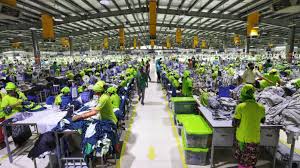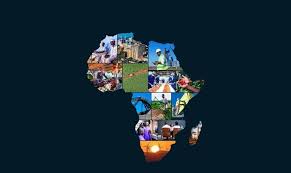From Famine to Factory Floors
In the early 1970s, Bangladesh was one of the poorest countries in the world. After a devastating war for independence from Pakistan, its economy was shattered.
The country relied almost entirely on jute production and small-scale farming. Hunger and famine were widespread, and in 1974, a World Bank economist described parts of Bangladesh as looking “like the morning after a nuclear attack.”
But within a decade, Bangladesh began an incredible transformation. A combination of smart policies, international partnerships, and industrial ambition helped it move from an agricultural economy to a global manufacturing powerhouse.
Today, 84% of Bangladesh’s export revenue comes from textiles and apparel. The country produces 20% of the world’s exported cotton T-shirts, even though it grows less than 2% of the cotton it uses.
The Turning Point: Policy, People, and Purpose
Bangladesh’s rise wasn’t accidental. In the late 1970s and early 1980s, the government introduced market-oriented reforms, including:
• Privatization of industries
• Trade liberalization
• Investment incentives such as duty-free import of machinery in export zones
• Preferential trade agreements with major markets like the United States and Europe
These changes attracted foreign investors and laid the foundation for a thriving ready-made garment (RMG) industry.
A landmark moment came in 1978, when Desh Garments Ltd of Bangladesh partnered with Daewoo of South Korea.
The collaboration transferred technology, skills, and management expertise that helped Bangladesh build its own competitive textile sector.
Over the next four decades, this model created more than 3,500 factories, employing over four million people, the majority of them women.
A Model of Inclusive Growth
Bangladesh’s economic growth has gone hand-in-hand with social progress. Programs like Better Work and Gender Equality and Returns, partnerships between the International Finance Corporation (IFC) and the International Labour Organization (ILO), have improved working conditions and opened new opportunities for women in factories and management.
The results are visible everywhere:
• Literacy among Bangladeshi women has reached around 75%.
• Women are more likely to pursue education, earn better incomes, and provide improved health care for their families.
• Female participation in the workforce has boosted both productivity and empowerment.
This inclusivity is one of Bangladesh’s greatest strengths — and one of the most important lessons it offers to other developing nations.
The Next Frontier: Africa’s Opportunity
While Bangladesh now looks to diversify beyond apparel and move into higher-value industries, Africa could become the next hub for textile manufacturing.
Many African nations — including Kenya, Ethiopia, Ghana, Egypt, Madagascar, and Morocco — already have the ingredients for success:
• A young, affordable workforce
• Abundant renewable energy and raw materials (including cotton)
• Preferential trade access through programs like the African Growth and Opportunity Act (AGOA)
In fact, several African countries are already producing for major global brands such as Zara, Calvin Klein, Uniqlo, Walmart, and Tommy Hilfiger.
To strengthen this transition, the IFC organized a roadshow in 2023, connecting African manufacturers with partners in Bangladesh and Sri Lanka. The goal was to encourage cross-regional partnerships and accelerate sustainable industrialization.
Sustainable, Inclusive Industrialization for the Future
Bangladesh’s success shows that industrial growth and social progress can go hand in hand. With the right policies and support, Africa can follow a similar path — creating millions of jobs, empowering women, and driving long-term prosperity.
As Bangladesh works toward its goal of becoming a high-income nation by 2041, it is also helping to inspire a new wave of “Tiger Economies” in the Global South.
Its story is a reminder that with vision, inclusivity, and the right partnerships, even the poorest countries can transform their futures.
Key Takeaway
Bangladesh’s journey from famine to factory floors is one of the greatest development success stories of modern times.
Its rise offers valuable lessons for Africa — that sustainable growth, women’s empowerment, and strategic investment can together turn poverty into progress, and ambition into global impact.



